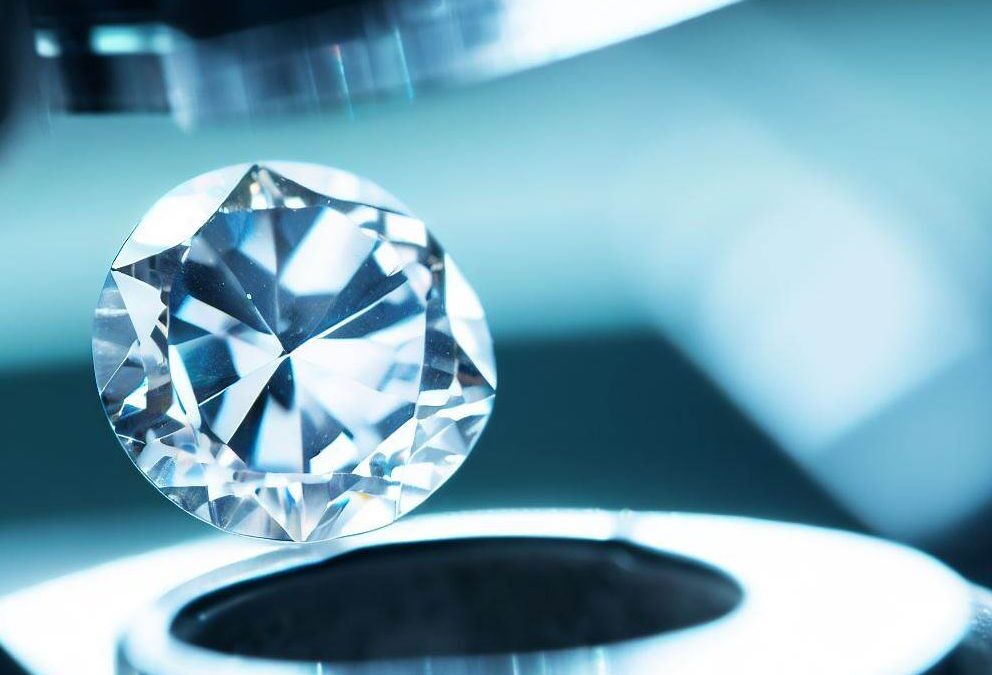Diamonds are often associated with luxury and glamour. They are used as a symbol of everlasting love and commitment in engagement rings. However, the traditional mining process for diamonds is not without its controversy. In recent years, advancements in technology have led to the creation of lab-grown diamonds, also known as synthetic diamonds. These diamonds are structurally identical to natural diamonds but are created in laboratories under controlled conditions.
The process of creating lab-grown diamonds involves mimicking the conditions that diamonds form in nature. There are two methods used to create lab diamonds. A high-pressure, high-temperature (HPHT) method and a chemical vapor deposition (CVD) method. Both methods involve the use of diamond seeds, which are carefully selected to ensure the resulting diamond is of high quality and clarity. Lab-grown diamonds offer a more ethical and sustainable option for diamond consumption, as they do not contribute to the environmental and human rights issues associated with traditional diamond mining. They also offer a more affordable option for consumers, as lab-grown diamonds are often priced lower than natural diamonds.
The Creation of Lab-Grown Diamonds
Lab-grown diamonds, also known as synthetic diamonds, are created through a process called diamond synthesis. Unlike natural diamonds, which are formed under immense pressure and heat deep beneath the earth’s surface over billions of years, lab-grown diamonds are made in a matter of weeks or months.
The resulting diamond is nearly identical to a natural diamond in terms of its chemical makeup and physical properties. In fact, lab-grown diamonds are so similar to natural diamonds that even experienced gemologists may have difficulty telling them apart without specialized equipment.
Advantages of lab-grown diamonds:
- Less expensive than natural diamonds
- Can be produced in larger sizes and quantities than natural diamonds
- More environmentally friendly than traditional diamond mining practices
- Free from the ethical concerns associated with diamond mining
Overall, the creation of lab-grown diamonds is a fascinating process that has revolutionized the diamond industry and offers consumers a new and more sustainable way to enjoy the beauty of these precious gemstones. By the way, an estimated 250 tonnes of earth is shifted for every single carat of diamond. For context, more than 100 million carats mined annually. And some mines are now so huge they can be seen from space using Nasa’s Terra satellite – write BBC.
Examining the Diamond Synthesis Process
CVD Diamond Synthesis
One of the main methods for creating synthetic diamonds is CVD. This process involves placing a small diamond substrate within a vacuum chamber that contains carbon-rich gas. The gas is then ionized and heated, causing the carbon atoms to form a crystalline structure on top of the diamond substrate. The process can take several weeks to complete, and the resulting diamond can range from small, industrial-grade stones to larger gem-quality diamonds suitable for jewelry.
- Preparation of the Substrate: The process begins with a diamond seed – a small piece of diamond. This seed is cleaned and placed in the CVD chamber.
- Heat Treatment: The CVD chamber is then heated to extremely high temperatures, typically around 800 to 1200 degrees Celsius.
- Introduction of Gases: Methane and hydrogen gases are introduced into the chamber. These gases are activated, or energized, which can be achieved by applying microwave power.
- Ionization Process: The activation of gases causes the molecules to break apart and ionize, forming plasma. The plasma allows carbon atoms to be released from the methane gas.
- Diamond Growth: The free carbon atoms will begin to settle on the diamond seed and slowly crystallize, layer by layer, thus replicating the diamond structure. This process can take several weeks to complete depending on the desired size of the diamond.
- Post Growth Treatment: After the diamond growth process, the diamond might undergo various post-growth treatments, such as annealing (to alter its color), laser cutting, and polishing.
- Inspection and Quality Control: The final stage is the inspection and quality control, where the diamond is inspected for any potential flaws. The cut, color, clarity, and carat of the diamond are all checked and graded accordingly.
Remember that while this is a simplified description, the actual process is much more complex and requires precise control over a variety of conditions.
HPHT Diamond Synthesis
Another popular method for creating synthetic diamonds is HPHT. This process involves using a large press to subject the carbon to extreme pressure and high temperatures to replicate the natural environment where diamonds are created. The resulting diamonds created using HPHT are often high-quality and desirable, but the process can be expensive and logistically challenging.
- Selection of Raw Materials: The process starts with a carbon source, typically graphite, and a metallic catalyst, often a mixture of iron, nickel, or cobalt.
- Preparation of the Growth Cell: The carbon source and metallic catalyst are placed into a growth cell.
- Application of High Pressure and High Temperature: The growth cell is placed into a press that can generate extreme pressures and temperatures. The press increases the pressure to around 5.5 million pounds per square inch (PSI) and the temperature to approximately 2552-2912 degrees Fahrenheit (1400-1600 degrees Celsius).
- Formation of Diamond: Under these extreme conditions, the metallic catalyst melts and the carbon dissolves into it. The high pressure and temperature conditions trigger the carbon atoms to precipitate out and bond in a diamond crystal structure on the diamond seed.
- Slow Cooling: The temperature is slowly reduced over several hours, allowing the carbon atoms to continue to crystallize into diamond.
- Removal of Diamond: Once the process is complete, the pressure is released and the diamond is removed from the growth cell. It is then cleaned and extracted from the remaining metallic catalyst.
- Post-Synthesis Treatment: The diamond may undergo additional treatments for color improvement or clarity enhancement, as well as cutting and polishing.
- Inspection and Quality Control: Finally, the diamond is inspected and graded based on its cut, color, clarity, and carat weight.
This is a simplified explanation of the HPHT process. The actual process is much more complex and requires precise control over a variety of conditions and is performed by trained professionals.
Conclusion
The diamond synthesis process represents an exciting and rapidly growing area of the jewelry industry. With advancements in modern technology, scientists and engineers are creating high-quality, ethical, and eco-friendly diamonds that are increasing in popularity. Whether used in industrial applications or as stunning jewelry, synthetic diamonds are an exciting alternative to natural diamonds that offer many unique advantages to consumers.
FAQ about How Are Lab-Grown Diamonds Created:
Ciao! I am Salvatore, a master jeweler from the mesmerizing island of Sicily. With a wealth of experience spanning over ten years, I take great pride in my exceptional craftsmanship and meticulous attention to detail. My expertise lies in both traditional and contemporary jewelry designs, where I seamlessly blend the rich history and culture of my beloved Sicily into each distinctive piece.




